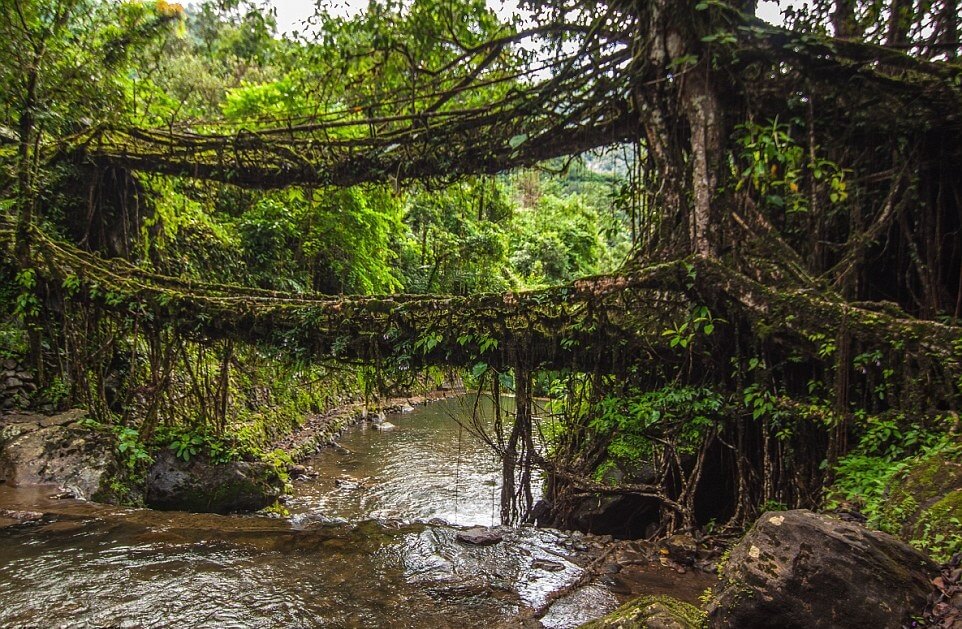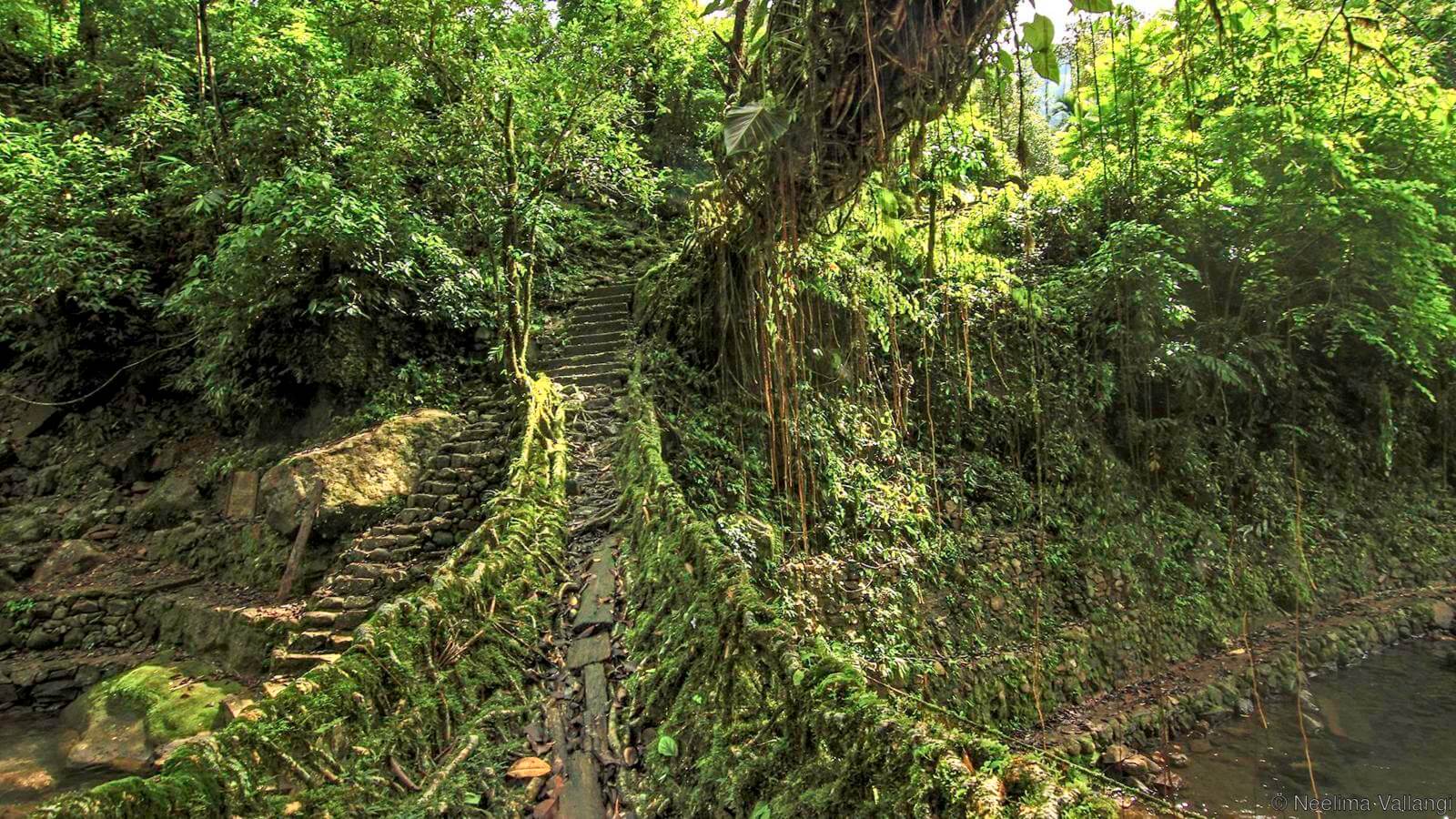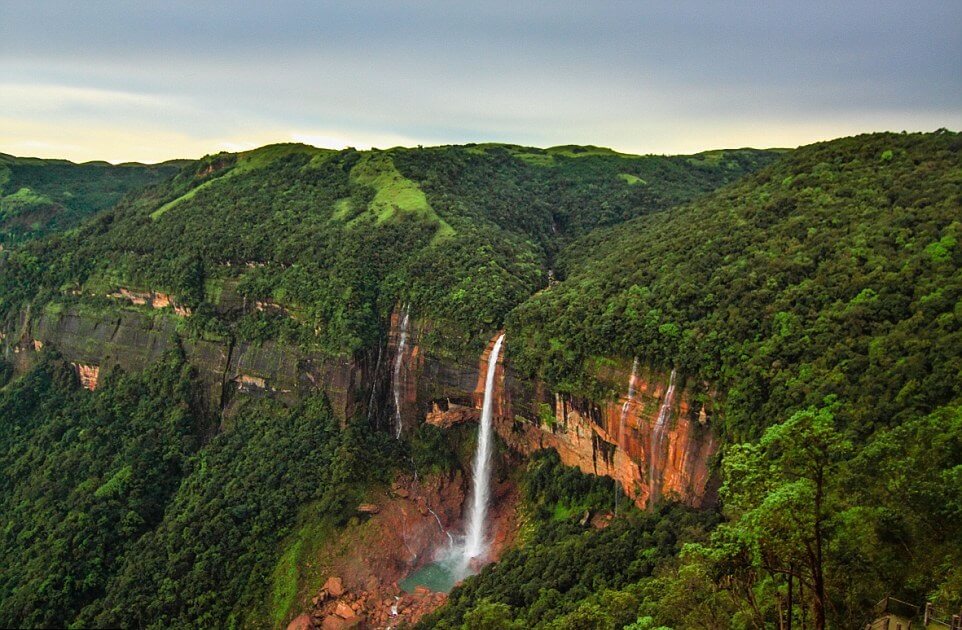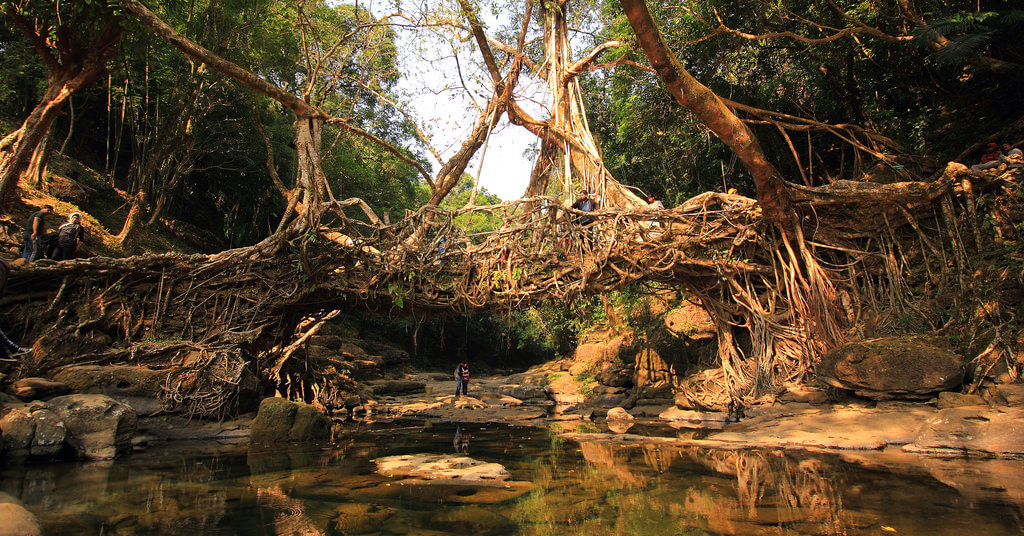In most places around the world, bridges are constructed using concrete and steel as the main building materials. Even in the epic Ramayana when Rama had to cross over to Lanka to save Sita, he built a bridge with mud and stone.
But in Meghalaya, (meaning Abode of Clouds) one of the seven sisters of the North Eastern states of India, bridges are grown or made to grow. The original architects of this natural bridge building technology are the forefathers of the Khasi tribe, one of the three major tribes in this hill state. The other two tribes are the Garos and Jaitias. Though this ancient technology appears to be theoretically simple, practically it is very difficult as it takes a long time to grow a root bridge.
The southern Khasi and Jaintia hills are humid and warm, crisscrossed by swift-flowing rivers and mountain streams. The region receives notoriously heavy rainfall, which causes waterways to swell – often leaving some of the most remote villages cut off.
In the past, Khasi the tribe would build bamboo bridges across the powerful streams. But the structures couldn’t bear the brunt of the heavy monsoons. They would rot and break, leaving villagers stranded. Using the roots of the Ficus elastica tree (rubber fig tree), the residents have woven an elaborate system of living bridges.
In order to make a rubber tree’s roots grow in the right direction—say, over a river—the Khasis use betel nut trunks, sliced down the middle and hollowed out, to create root-guidance systems. The thin, tender roots of the rubber tree, prevented from fanning out by the betel nut trunks, grow straight out. When they reach the other side of the river, they’re allowed to take root in the soil. Given enough time, a sturdy, living bridge is produced.
The root bridges, some of which are over a hundred feet long, take 10 to 15 years to become fully functional, but they’re extraordinarily strong—strong enough that some of them can support the weight of 50 or more people at a time. These bridges are an amazing alternative to wooden bridges that dwindle with so much rain falling on them.
Unlike traditional constructions, Meghalaya’s root bridges only grow stronger with time, never requiring major maintenance or rebuilding; the strongest root bridges are more than 100 years old.
Some of the ancient root bridges used daily by the people of the villages around Cherrapunji may be well over 500 years old.
In the past 25 years, however, the practice of building these living bridges has been dying out. Rather than spend years creating living paths, builders today use steel rope and modern construction methods to bridge Meghalaya’s streams and rivers.
There are many living root bridges scattered across the dense valleys of Meghalaya’s Khasi Hills region, but the most spectacular and arguably the most famous is the Umshiang double-decker bridge, which is more than 180 years old. It is found just outside Nongriat, a small village that’s reachable only by foot, about 10km south of the town of Cherrapunji. The bridge’s two levels span the Umshiang River, and local villagers are adding a third level, hoping it will further attract tourists.
Khasis follow a matrilineal culture, where the husband moves to the wife’s village after marriage and children take on the mother’s surname. Biron Nongbri, a schoolteacher from a nearby town, moved to Nongriat after he was married. His wife’s grandfather helped build the Umshiang bridge.








